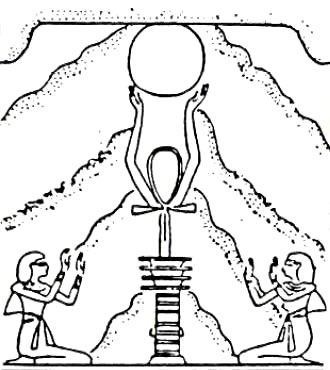The general plane is unique, but divides itself in diverse parts, in a way that in everything there are distinct places, some more pleasant, others less so. And souls, also unequal, come to inhabit these distinct places that correspond to their own diversity. In such a way, everything is arranged and the differences in their situations correspond to the inequality of the souls. ~ Plotinus
It is not the demon that chooses you, but you yourself chose your demon. You yourself choose the destiny of that life to which you are irremediably connected. ~ Plato

After the quotes from Plotinus and Plato, Julius Evola next discusses various supernatural beings from Tradition, which Evola accepts as real entities and essential for his ideas on spiritual races. However, there is no reason to restrict their influence to antiquity; they are present and fully active today.
This expression [“demon”, from Plato] is particularly interesting for us, since here the concept of demon has nothing to do with the Christian idea of a wicked entity, but instead has a close relation to the deepest forces of races, both of the soul and of the body. Even here, we cannot delve into the traditional doctrine in regards, but only to recall that, likewise, the demon, the lares, the penates, the “doppelganger” [doppio], which is a synonym for “subtle body”), are entities that in antiquity interfered in and reflected the precise knowledge of the true roots of the differentiation of bloodlines, gentes, and ultimately the individuals themselves on the basis of a totalitarian vision of the world, including the invisible and the visible, and not of that mutilation of the moderns who only know material and psychological processes. From such testimonies which could be multiplied with reference to the traditions of all peoples, the idea of transcendental, or vertical, heredity therefore is confirmed, and of the choice that on the base of analogous correspondences, determines the connection of it to a horizontal, historical, biological heredity. The consequences of all the in regards to the justification of the racial ideas are clearly visible.
Since we have already discussed the notions of Angels and Demons, we will move onto the other supernatural beings. The lares are protecting spirits of dead ancestors. They kept watch over the affairs of the family. Many pious people today are aware of the watchful presence of their ancestors. In addition, there are lares to protect broader domains such as neighborhoods, cities, states, livestock, and so on. Obviously, we still know these spirits, but they are now called patron saints or guardian angels. The principalities are the guardian angels for the various nations and countries, as accepted by Muslims and Traditional Christians, as well as the ancient pagans.
The penates more or less serve the same function as the lares. Since Evola accepts demons, lares, and penates as real beings, we should expect their presence to be made known, at least to those of the proper disposition and sensitivity. That they are called today the spirits of one’s ancestors, patron saints, or angels makes no difference for their reality.
By “double” [doppio], or doppelganger, Evola means the subtle body, i.e., the soul. In ancient Egypt this was called Ka. In the Ancient City, Fustel de Coulanges describes the state of the soul after death, as related in Hindu, Greek, and Roman traditions. Since we have previously discussed this on several occasions, and in the future we want to compare it to the state of the souls in Limbo according to Dante, we will move on.
So it should be absolutely clear now what Evola means by the “third dimension” of history. The modern mind can only see material or historical processes, which correspond to gross and subtle manifestation. However, the vertical dimension includes a whole array of beings who are involved in the creation of nations, peoples, and individuals. The actions of these beings are invisible to the modern mind which can only attribute them to material and biological causes.
Given this, we are in a position to better understand the existence of man in the light of Tradition. As Evola points out, the difference between Essence and Existence is a matter of degree. Here we understand man’s Essence as who he is in himself, his Spirit, his karma (what he carries into the world) and his dharma (his task or destiny in the world). His Existence, then, is the meeting of this Essence interacting with the horizontal forces at the proper time and space suitable to him, by the Law of Elective Affinity. This is not a bipolar process between Essence and Existence, but rather an emanation involving higher beings and influences. If you look at the diagram from Spiritual Beings, this process takes the being through the angelic influences which determine his race, nation, family, and so on, then through the astral and planetary influences, and finally through the four elements. This is the birth of man in the vertical direction.
Wouldn’t the soul be the ‘Ba’ in Egyptian theology? What would the ‘Ba’ be then?
And what would ‘Ka’ be considered in Alchemy? Mercury? Would ‘Ba’ be Sulphur?
“Ethos Anthropoi Daimon” — Heraclitus.